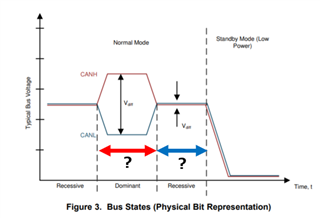Hi team,
My customer wants to use 500kHz for data transfer.
According to the datasheet, the Receiver switching characteristics is specified at 2,5,8MHz.
What should I think about at 500kHz?
If you have any advice, please let me know.
Please let me know if you have time to confirm the Dominant or Recessive.
Sincerely.
Kengo.
-
Ask a related question
What is a related question?A related question is a question created from another question. When the related question is created, it will be automatically linked to the original question.

